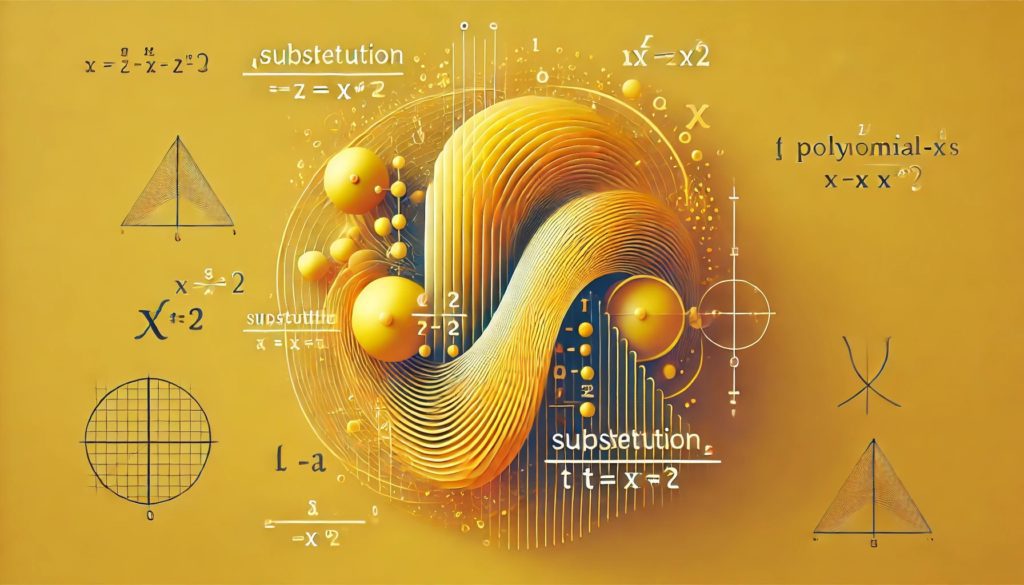Reducing Some Fourth-Degree Equations to Quadratic Equations
Many fourth-degree polynomial equations can be transformed into quadratic equations using a well-known high school trick described here:
Reducing to a Quadratic Equation
This works, of course, and very much so for polynomials in complex numbers.
To remind you, what we do is having the equation:
{{z}^{4}}+3{{z}^{2}}+2=0We substitute: {{z}^{2}}=t
And we get a quadratic equation:
{{t}^{2}}+3{t}+2=0Then we solve it using the usual delta and so on, we get solutions ![]() , remembering that
, remembering that ![]() we form two next equations from them:
we form two next equations from them:
![]() or
or ![]()
We solve them and we have four solutions: ![]() .
.
Reducing Some Higher-Degree Equations to Quadratic Equations
Absolutely nothing stands in the way of extending this method to equations of degrees higher than 4 (if, of course, they can be reduced to quadratic equations by substitution).
So we have:
2{{z}^{6}}-5{{z}^{3}}+4=0We can also notice that it is equivalent to:
2{( {z}^{3})^{2}}-5{{z}^{3}}+4=0And after substituting: ![]()
We get a quadratic equation:
2{{t}^{2}}-5t+4=0In the equation:
{{x}^{10}}-3{{x}^{5}}+1=0After substituting: ![]()
We have:
{{t}^{2}}-3t+1=0And so on, and so on…
Example
Let’s take the equation:
z^6+(1-i)z^3-i=0We substitute z^2=t and we have:
t^2+(1-i)t-i=0Then we calculate:

We calculate these roots using the methods known from complex numbers (shown for example in my Course).
We have ![]() or
or ![]()
That is:

Remembering that these are not solutions yet, because z^3=t
So we have to solve the equations:
z^3=-1And:
z^3=iWe transform them into:
![]() and
and ![]()
And calculating again using the known methods, we have three roots from the first equation:

And three roots from the second equation:

Solved 🙂


